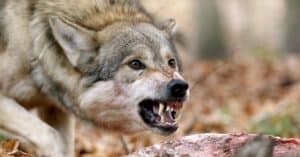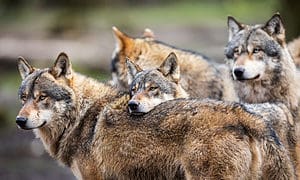The canid family contains thirty-five species, eight of which live in North America. Scientists have broken the canid family into three categories; wolf, coyote, and fox. Wolves are the biggest-sized members of the canid family and are the species from which our domesticated dogs descended.
How Many Types of Wolves Are There?
There are three species and close to 40 subspecies of the wolf, according to the Integrated Taxonomic Information System (ITIS). Today we will discuss the large and well-known gray wolf and the smaller red wolf. Dogs, coyotes, jackals, and foxes are all members of the Canidae family, but they are not wolves.
Scientific Classification of Wolves
Wolves are members of the Canidae family, like all other dog-like mammals, and they are from the genus Canis. The red wolf is scientifically called Canis rufus, and the gray wolf is scientifically called Canis lupus.
In addition to their scientific name, wolves are often given common names based on region. For example, a wolf living in the tundra might be called a tundra wolf, and a wolf living in a forest is often called a timber wolf.
Gray Wolf Description
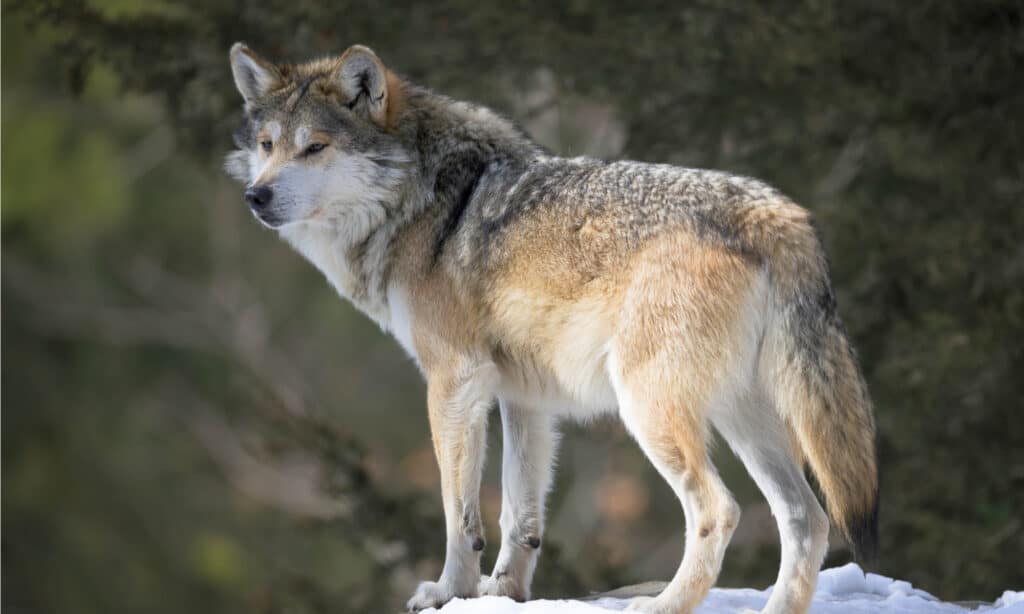
Gray wolves are the largest members of the
Canidaefamily.
©Nagel Photography/Shutterstock.com
Gray wolves live in many different climates and regions, and their appearance changes based on where they live. In general, gray wolves are the largest members of the Canidae family and have a broad snout, short ears, and a long tail. They are slender and well-muscled, with a large ribcage and long legs. They can run fast and leap through deep snow. Their triangular ears provide them with excellent hearing. Their big head and strong jaws make them excellent hunters. Their teeth are well suited to crushing bones and meat.
Gray wolves are between 40 and 60 inches long and around 32 inches tall. The average wolf weighs 88 pounds. Males are typically larger than females by about ten pounds. Gray wolves have dense fur and a short undercoat that keeps them warm in harsh weather. In the summer, gray wolves shed their winter coat to stay cool.
Red Wolf Description
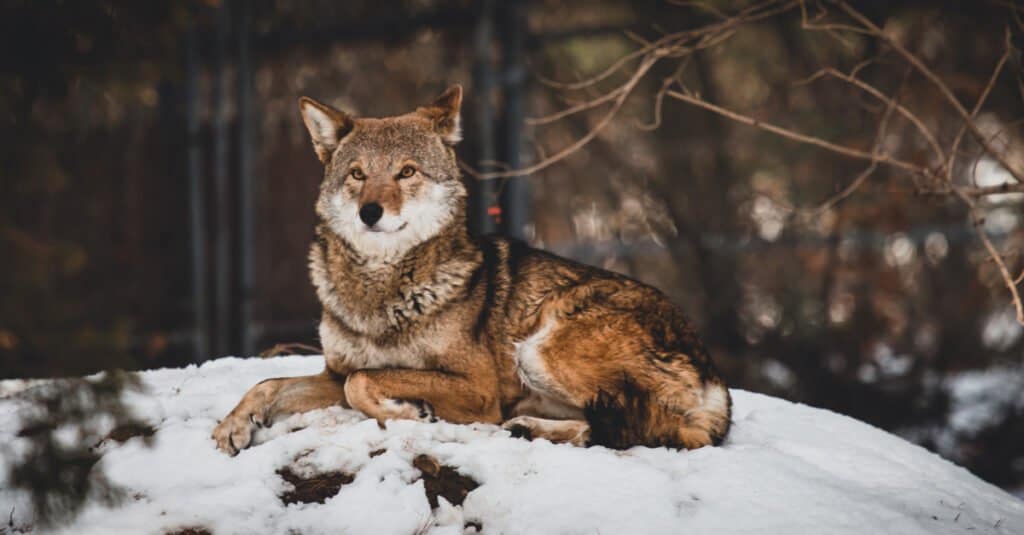
The red wolf is smaller than the gray wolf and is often mistaken for a coyote.
©mruizseda/Shutterstock.com
Red wolves look similar in almost every way to grey wolves. They also have strong jaws, triangular ears, and bushy tails. The red wolf is smaller than the gray wolf and is often mistaken for a coyote, although it is actually bigger than a coyote. The red wolf has a coat that is more tan than gray. They are well known for the white markings on their muzzle. They also have a coat that is not as thick as a gray wolf, so they aren’t as well suited to an icy climate. Because their coat is thinner, they have a slightly long-legged appearance. Red wolves prefer a diet of small animals like rabbits and gophers.
Wolf Population
Wolves used to inhabit most of the land in the northern hemisphere, but about one-third of their habitat has been destroyed. Due to conflict with humans, the wolf population has been steadily declining for many years. The red wolf population is less than twenty in the wild (all in a small coastal region of North Carolina) and is considered a critically endangered species. The gray wolf population is 250,000 to 300,000; also an endangered species. Wolves now live in less than eight percent of the lower 48 states in the USA.
Coyote

Coyotes are much smaller than wolves and have a higher population.
©JayPierstorff/Shutterstock.com
Coyotes are scientifically named Canis latrans. They are not wolves, but they are members of the same family. They are much smaller than wolves and have a higher population. Coyotes also inhabit a larger area than wolves because they have been able to adapt to living near humans. Coyotes are often killed and trapped by humans throughout North America but have not yet been named a threatened species.
Foxes
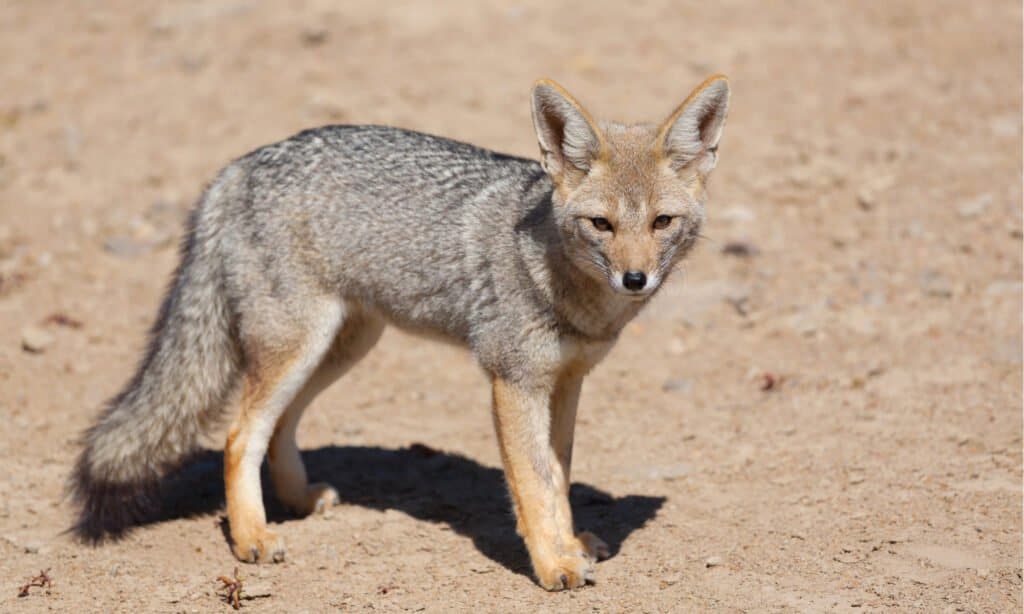
Foxes are adept at living in urban, suburban, and rural environments.
©sunsinger/Shutterstock.com
Foxes, along with coyotes and wolves, are also in the Canidae family, but they are members of a different genus than wolves. Similar to wolves, there are both grey and red foxes. Foxes inhabit about 75 percent of the United States. You can also find foxes in Europe, Asia, Australia, and Africa. They are adept at living in urban, suburban, and rural environments and are excellent scavengers and hunters.
Incredible Wolf Facts
- Female wolves weigh 60-80 pounds. Males weigh 70-110 pounds
- Wolves live up to 13 years in the wild. Their most common age is between 6-8 years.
- Wolves have gray fur but can also have white and black markings.
- Wolves have 42 teeth.
- Wolves breed in very early spring, as early as February. They are pregnant for two months, and the babies only weigh one pound!
- Each wolf mama has between four to six puppies.
- Wolves live in packs. The average pack has five to eight wolves. The largest known wolf pack had 30 family members!
- Wolves usually jog at five miles per hour, but they can sprint as fast as 38 miles per hour!
- Wolves mostly eat hooved animals like deer, moose, and bison.
Up Next:
- The 10 Largest Wolves in the World
- Do Wolves Really Howl at the Moon?
- Fox Habitat: Where Do Foxes Live?
The photo featured at the top of this post is © David Dirga/Shutterstock.com
Thank you for reading! Have some feedback for us? Contact the AZ Animals editorial team.



